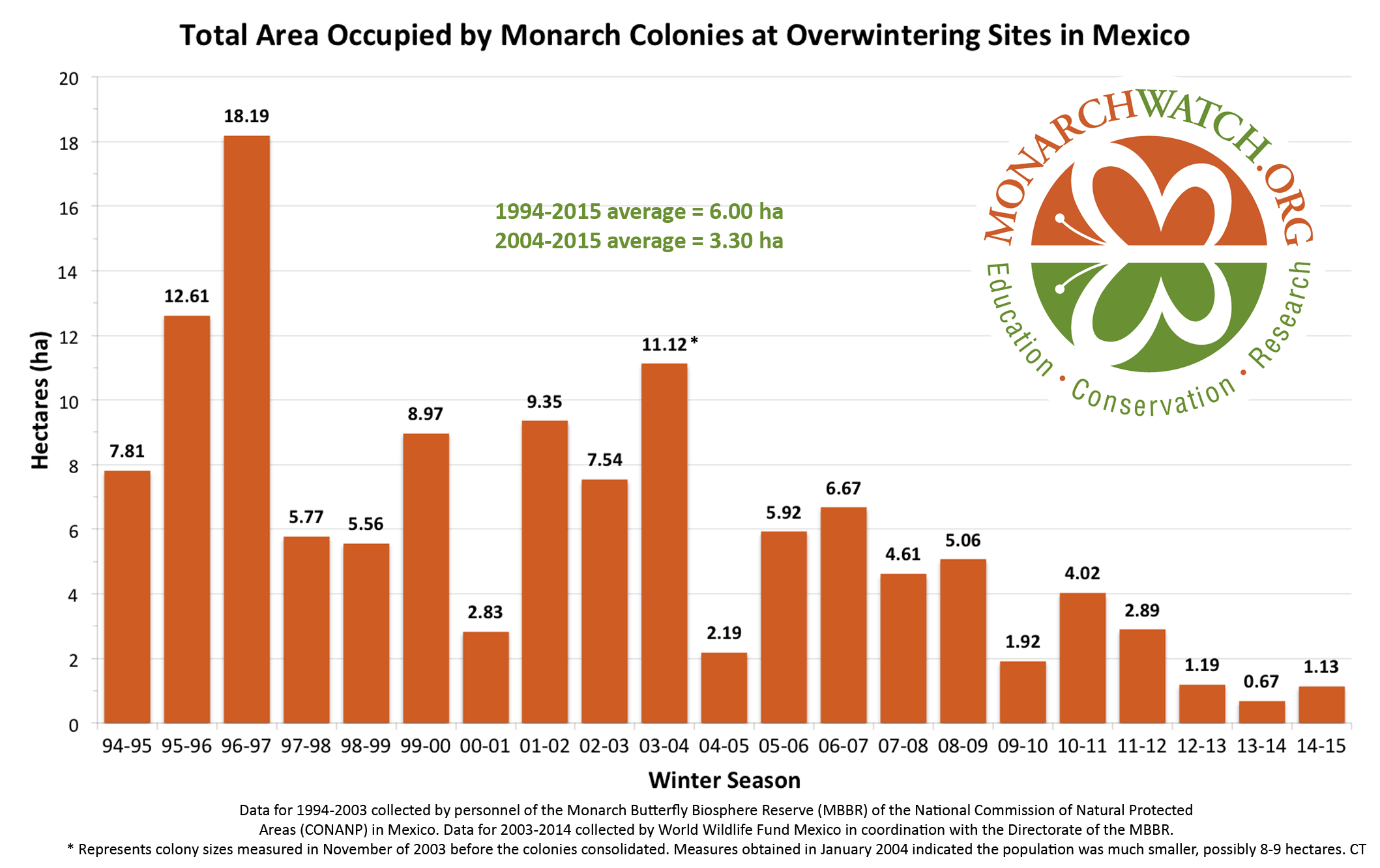Monarch Population Status
Thursday, August 6th, 2015 at 4:39 pm by Chip TaylorFiled under Monarch Population Status | Comments Off on Monarch Population Status
It appears that I’ve made another wrong turn. My monarch GPS keeps saying “Recalculating, recalculating.” I get tired of hearing that refrain but when the GPS insists that you are off the preselected path, it’s wise to pay attention.
When I wrote the last “Monarch Population Status” update on the 16th of July, there was evidence of an uptick in the number of adult monarchs being sighted. I used the frequency and locations of these reports to arrive at the general predictions of where the migratory population was likely to be relatively robust (much of the Midwest) and quite weak (Ontario and the Northeast). The number of reports of sightings increased after 16 July and soon thereafter followed reports of eggs – lots of eggs – mostly in the regions previously identified as likely to have a good migration (Dakotas to Michigan). The number of eggs found and the distribution of these finds now leads me to suspect that the migration through the upper Midwest will be better than any migration seen since 2011. This is good news since the tagging, isotope and observational data suggest that more than 90% of the monarchs reaching Mexico originate in this region. You may recall that temperatures during the breeding seasons of 2012 and 2013 were less than ideal, resulting in population declines each year. Last year the conditions were more favorable and I predicted in May that the population would increase. It did, though not by the amount I expected.
I’m encouraged by the egg data. As I’ve mentioned in previous status updates, the size of the migration is strongly influenced by the number of eggs laid between 20 July and 7 August. Most of the butterflies that result from these eggs become non-reproductive and join the migration from late August through early October as it moves progressively southward starting about the 10th of August at 50N (Winnipeg). The 45-day forecast is also encouraging since it suggests that temperatures will be favorable for the development of the migratory generation. If this forecast is more accurate than the one I used to make my predictions in early May – and conditions during the migration are storm-free – the number of monarchs at the overwintering sites could occupy an area of 1.8 – 2.3 hectares. This would be a substantial improvement given that the total last year was 1.13 hectares and that of the previous year was .67 hectares (see figure below). More would be better of course, since the predicted El Niño could take a toll on the population during the latter part of the coming winter.
It will be a battle but we need to get the overwintering numbers up to at least 4 hectares in the coming years to be assured that sufficient numbers survive in the event of catastrophic winter storms such as those occurring in January 2002 and January/February 2004. To reach the 4-hectare goal (or the 6-hectare objective of the United States Fish and Wildlife Service) will require a massive effort to restore milkweeds in the milkweed/monarch corridor that extends from Texas through Minnesota. The weather during the breeding seasons will need to be favorable as well.
PLANT MILKWEED!

Figure: Total Area Occupied by Monarch Colonies at Overwintering Sites in Mexico


Sorry, comments for this entry are closed at this time.